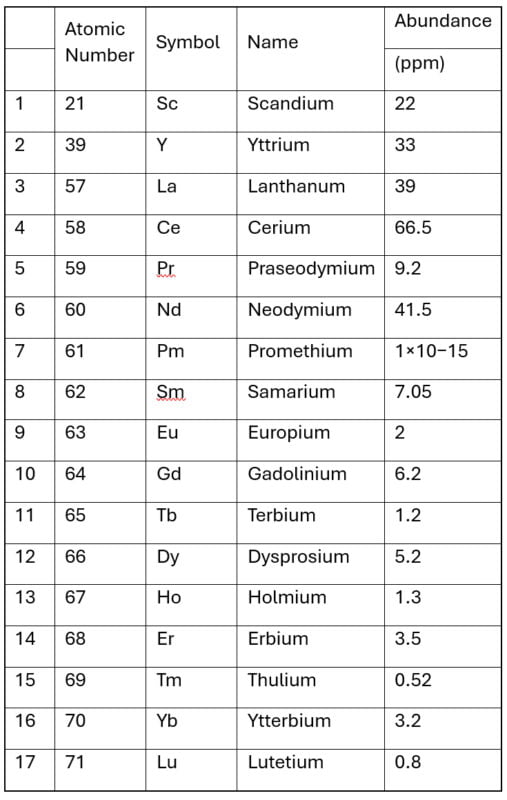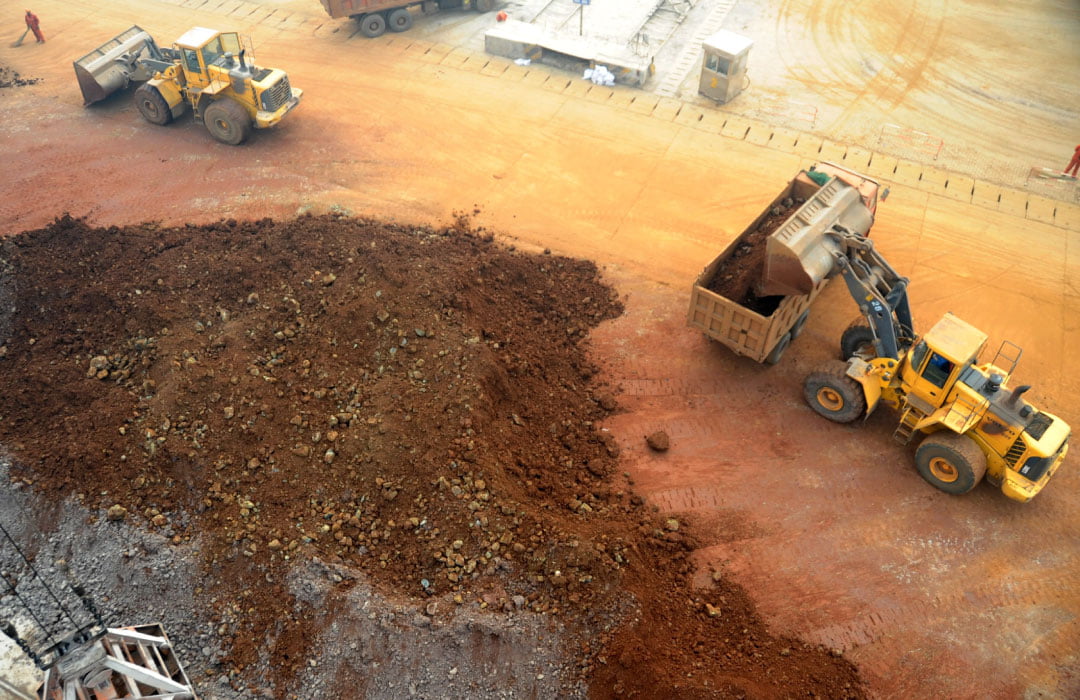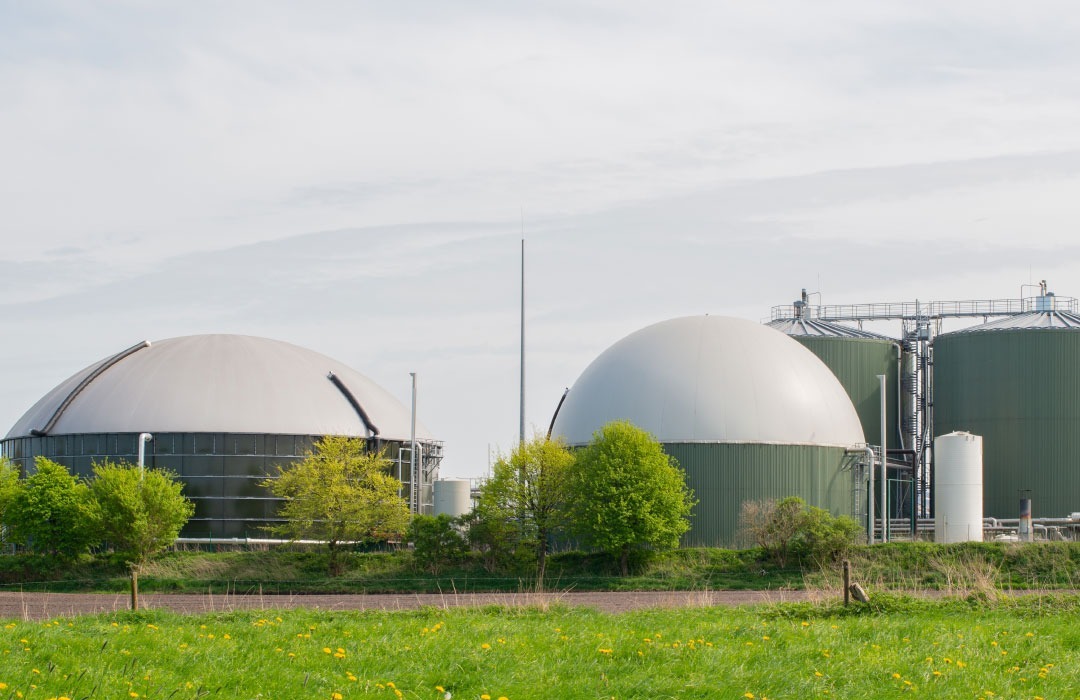Rare, not Scarce, Elements
Rare earth elements, also known as rare earth metals[1], are a group of 17 chemical elements that are crucial for various modern technologies and industries.[2] This group includes elements such as cerium, neodymium, dysprosium, and many others, and have unique properties that make them essential for the modern production of smartphones, electric cars, renewable energy sources, and many other high-tech devices.
Despite their name, rare earths are not actually rare in terms of their abundance in the earth’s crust. However, they are typically found in low concentrations and are difficult and expensive to extract, making them valuable and highly sought after because of the applications. The key is to find them in concentrations which make them commercially viable to mine.
In this article, we will dive deeper into the world of rare earths, discussing their importance, production, and the leaders in this industry and hence why clients of Projects RH are seeking to invest in the sector.
Why are they important
Rare earths have unique properties that make them essential for various modern technologies and industries. For example, neodymium is used in the production of powerful magnets that are crucial for wind turbines and electric motors in vehicles. Dysprosium is used in the production of high-strength magnets for electric cars. Rare earths are also used in the production of smartphones, computers, medical equipment, and many other devices we use every day. Their key strength lies in that they make things more effective and reduce their weight.
In addition to their use in technology, rare earths also play a vital role in renewable energy sources such as solar panels. Europium is used in the production of phosphors for energy-efficient lighting, while terbium is used in the production of batteries for hybrid cars. The list of applications for rare earths goes on, and their importance in our daily lives cannot be understated. In short, without the use of rare earths the technologies we want would not be available.
Where are Rare Earths Found?
Rare earths are primarily found in two types of deposits: bastnaesite and monazite. Bastnaesite is a mineral that contains high concentrations of light rare earths, while monazite contains heavy rare earths. These minerals are usually found in igneous rocks and carbonatites, which are formed by molten rock and carbonatite magma, respectively.
The majority of the world’s rare earth production comes from China, which holds about 37% of the global reserves. Other countries with significant reserves include Brazil, Vietnam, Canada, Australia and Russia. The United States also has significant reserves of rare earths, but it currently relies heavily on imports to fulfill its demand.
During Covid-19 the closure of many trade routes demonstrated the need to develop more global resources. One aspect of the US Inflation Reduction Act was to finance global development of the sector where the ultimate application of the mineral was to be in the USA.
What is the Economics of Rare Earth Production?
The economics of rare earth production are heavily influenced by supply and demand. As mentioned earlier, China currently produces the majority of the world’s rare earths. In 2010, China imposed export quotas on rare earth elements, causing a surge in prices and highlighting their importance in global markets.
However, in recent years, other countries have started ramping up their production to decrease their dependence on China, with further exploration and new projects in Brazil[3] and Australia[4] with which Project RH has some association. We have had discussions with projects in Southern Africa and Colombia.
This has led to a decrease in prices and a more competitive market. The production of rare earths is also a capital-intensive process, making it important for companies to have a stable and secure supply chain to ensure profitability.
Who is Developing Rare Earths?
In most parts of the world, it is the domain of the mining industry. The process of developing rare earths is a complex and expensive one. It involves the usual stages of mining, including exploration, proving of the resource, an independent source report, a bankable feasibility study, environmental approvals, agreement with the local community, site preparation, mining, processing, and refining. The first step is exploration, where companies use various methods to identify potential deposits of rare earths. Once a deposit is identified, the mining process begins to extract the ore containing the rare earth elements.
After mining, the ore is sent to a processing facility where it undergoes various chemical and mechanical processes to extract the desired elements. The final step is refining, where the rare earth elements are isolated and purified before being sold to manufacturers and industries. This second stage commonly occurs in remote specialized facilities
Who are the new Leaders in Rare Earths?
The demand for rare earths is increasing because of their application in new energy technology and computing in its broader sense. As the demand for rare earths increases, more and more companies are entering the market to meet this demand. This is occurring at exploration, mining and processing levels. Some of the leaders in rare earth production include Lynas Corporation in Australia[5], which is the second-largest producer of rare earths globally, and MP Materials in the United States, which operates the largest rare earth mine outside of China.
Other companies such as Iluka Resources in Australia and JLL in Japan are also significant players in the industry. However, China still dominates the market, and many Chinese companies are also leaders in rare earth production and application.
The Crucial Role of Rare Earth Elements in Modern Technologies
As we understand them more, and their application in the decarbonization and electrification of things continues, rare earth elements play a crucial role in modern technologies and industries, and their importance is only expected to increase in the coming years. While China remains the dominant player in this industry, other countries are ramping up their production to decrease their dependence on imports. As we continue to advance technologically, the world of rare earths will continue to evolve, making it an exciting space to watch.
The strategic nature of rare earths is now an important part of the development cycle. The issues associated with Northern Minerals in Australia are an example of this.[6]
At Projects RH we have the privilege to work with companies seeking to explore for, define resources of and commercialize rare earth deposits.
In some circles, it is said that rare earth elements originated from space debris. Do you believe that future space missions will aim to discover additional “rare earth” resources, and would it have commercial implications?
The Role of Information Memorandums in Attracting Investors
To successfully secure funding for rare earth projects, an information memorandum is essential. This document provides potential investors with comprehensive details on the project, addressing everything from financial forecasts to market opportunities. Understanding what is an information memorandum can give companies a competitive edge, ensuring their pitch aligns with investor expectations and market standards.
By Paul Raftery, CEO of Projects RH. We are happy to receive questions of comments at paulraftery@projectsrh.com
—————————————–
Appendix
The list of Rare Earths[7]

[1] Rare earth elements (“REEs”) are a set of seventeen chemical elements. They include the fifteen lanthanides plus scandium and yttrium. Scandium and yttrium are rare earth elements since they are often found in the same ore deposits as the lanthanides and have similar chemical properties. The term ‘rare-earth’ is a misnomer because they are not scarce, although historically it took a long time to isolate these elements. (See “Rare-earth element” Wikipedia (accessed 9th June, 2024).
[2] A list appears as the Appendix.
[3] See “Explorers Podcast: A meteoric rise in Brazil’s rare earths game”, The Australian, 7 June, 2024
[4] Bell, M.; “Northern Minerals executive chairman Adam Handley promises to listen to shareholders”, The Australian, 6 June, 2024.
[5] At the time of writing the speculation continues that ASX Lynas is considering a merger with MP Materials listed on the NYSE. See Thompson, B.; “Lynas boss leaves door ajar for rare earths mega-merger”’ The Australian Financial Review, 24 April, 2024.
[6] Evans, N.; “Data hacked from China-linked Northern Minerals released on the dark web”; The Australian, 4 June, 2024.
[7] Source “Rare-earth element”, Wikipedia at (viewed 09 June 2024.)




